Art collector David Roberts on his new gallery
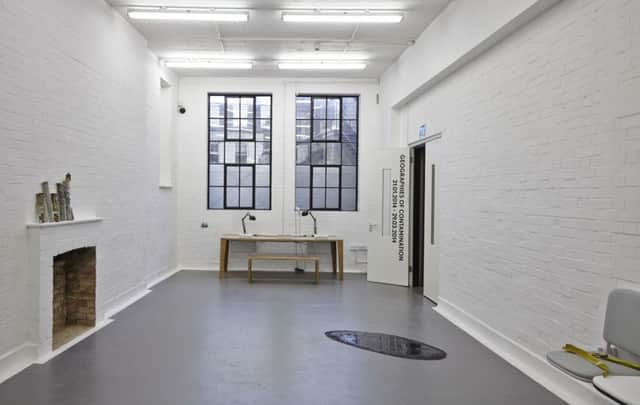

David Roberts himself hurries in, nearly late for our appointment. He’s in his mid fifties but looks younger, with sandy hair and a pair of immaculate navy suede shoes. Roberts grew up in Port Glasgow and got his first job in the local shipyard, before going on to become a millionaire property developer. In recent years, he has also become one of the country’s biggest art collectors, with a cache of more than 2,000 pieces including works by Damien Hirst, Andy Warhol, Eduardo Paolozzi, Anish Kapoor and Anthony Caro. Standing in the whitewashed gallery space, surrounded by his aquisitions, he shrugs and smiles: “Some people buy boats. I’m not very keen on boats.”
Roberts is the antithesis of the celebrity art collector. He shuns the limelight, at one stage sparking rumours that a Saatchi-style mystery buyer was in town, hoovering up new talent. He has assembled his diverse collection according to his own tastes rather than paying advisers to make purchases for him. But, occasionally, to promote the work of his art foundation, he is persuaded to emerge from the shadows.
Advertisement
Hide Ad“I rarely go to openings,” he says. “I prefer not to, I prefer quietly being in the background rather than being in the forefront of things. You get lots of people who say a collection is all about ego. I built up the collection with no real idea of showing it to anyone.” His collection is still growing, and is now considered one of the more important in the UK. But he likes to support young artists as well as established names. In the gallery, gold letters on the wall (a work by Spanish artist Dora Garcia) spell out: “It is not the past but the future that determines the present.” Something of this resonates through our conversation.
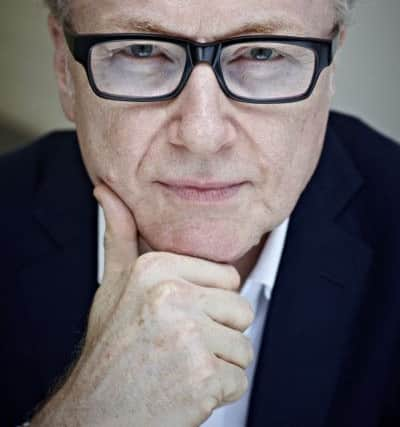

We sit and talk in the last room of the gallery which, at the time of my visit, houses a group of works by Martin Boyce, the Glasgow artist who won the Turner Prize in 2011. Roberts’ Lithuanian wife, Indre Serpytyte, a fine art photographer, brings us lattes from a nearby cafe. He speaks with a soft Scottish accent, and is rarely effusive, but there is no disguising his enthusiasm for art: the art fairs which have a ring-fenced place in his busy schedule, the galleries, the artists – many of whom he regards as personal friends, the “very special” Philip Guston painting he recently managed to buy. The DRAF exhibition space is a long hall of white-washed bricks, subdivided into several rooms. I say it reminds me of the Arsenale in Venice, the immense former ship-building complex used for the Venice Biennale. He laughs and says he wishes it was that big.
Toby Webster, director of contemporary Glasgow gallery The Modern Institute, from which Roberts has bought a number of works, says: “David is quite an incredible guy. When you start to scratch the surface you realise that (art) runs his life. He knows so much, because he has been doing it for a long time. He’s a true believer, it’s not about making a fast buck. Some people would just pick a curator that would choose the hot things that would make them a lot of money. David doesn’t do that. He has a good eye, he follows his nose rather than being told what to follow, that’s unusual these days.”
Roberts was born in Greenock and grew up in Port Glasgow. All the men in his family worked in the shipyards, “grandfather, father, brother, uncles, everybody”. When he left school, he took a job labouring in the local yard, Scott Lithgow’s, “just to earn some money”, and then moved into a job as a draughtsman (“Sadly, I’m old enough to remember using slide rules, not calculators.”) “There was a plan that I was going to do naval architecture, I was going to be sponsored by Scott Lithgow’s, but that lasted for about a year then I decided it wasn’t for me. Which was probably just as well because I think the industry was dying very rapidly at that point.”
Instead, he became a surveyor and took a degree in land economy. “I moved to London in the mid 1980s, worked for a variety of companies, got various jobs and promotions, went from being someone who advised people on property to ultimately buying my first property and building up my company, Edinburgh House Estates.” He made his millions buying and selling commercial property, and now does much of his business in Germany. Long stays in Berlin enable him, by happy coincidence, to keep his finger on the pulse in Europe’s first city for contemporary art.
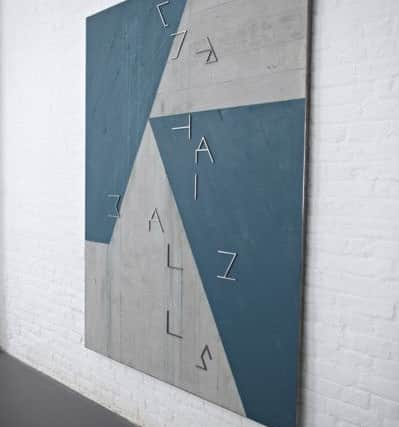

Looking back, he suspects his passion for collecting began in his twenties, when he bought prints and limited edition posters: “But I never had any money, so it was always cheap and cheerful.” As a young man working in a surveyor’s office in Glasgow, he was a regular visitor to the Burrell Collection. “I used to live in Shawlands, so as long as the weather was nice you could just about walk up. I found it fascinating that somebody could have such an unbelievably diverse sense of collecting – church doorways, Persian rugs, tiles, Gustav Courbet paintings, bronzes, ancient Egyptian artefacts – that one man had collected all that in his lifetime. I suppose a lot of major collectors are like that, but I didn’t really know about them. Here was somebody from Scotland, involved in shipbuilding, who did that. That’s always been an inspiration.”
Advertisement
Hide AdHis own art-buying started casually, browsing oil paintings in high street galleries or on holiday. “I didn’t buy them because I had any connoisseurship or any knowledge, I’d buy something because I thought it was a nice oil painting. I remember buying one because there was a boy and a girl in it who looked very much like my son and daughter.” (Roberts has six children from his first marriage).
But soon his tastes became more diverse: muscular Peter Howson figures, British and American abstract paintings, sculpture, video and conceptual art. Scottish sculptor Eduardo Paolozzi became a major interest. In the wake of the Young British Artist (YBA) sensation, he bought major works by Damien Hirst, Jake & Dinos Chapman, Marc Quinn, Gary Hume. More recently, Scottish artists Martin Boyce and Charles Avery have become important.
Advertisement
Hide AdRoberts says: “My knowledge of art progressed through collecting it. You can self-educate. It has been a long journey, having to learn the ways of the art world and the art market, it takes a long time. I’ve never employed an art adviser to go round the galleries with me, I’ve always done my own groundwork, I think I prefer it that way. You probably make more mistakes, but that means you learn more. And I think it means you take more risks.”
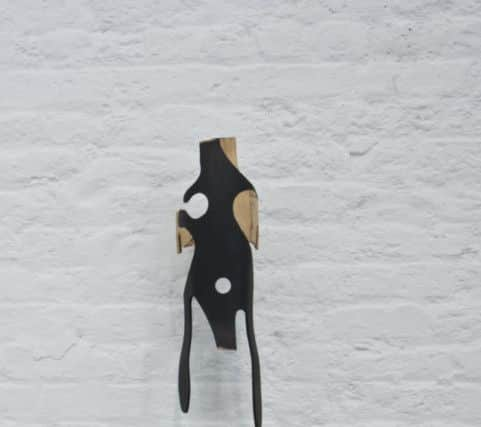

It wasn’t always easy at first. “There was a lot of snobbishness, in the old-fashioned sense,” he said. “If you go into a gallery and don’t look like somebody who is going to buy one of their paintings, people can be... Some galleries were immensely kind and helpful, but there were other places where there was a very cold atmosphere.”
He was spurred on by the energy coming out of the London art scene. “I found contemporary art very exciting. It’s happening all around us as we speak, it’s new. I think the art world itself has exploded in the last 15 or 20 years, and it is quite exciting to be in amongst that explosion, to know the people involved and become friends with them. Also, it’s so diverse. There are some people who will build up a fantastic collection of Andy Warhols. I love Andy Warhol’s work, but I could never imagine having hundreds of Andy Warhols and nothing else.”
He says he doesn’t buy art as an investment, and rarely sells anything. “I buy art because I really love it. That means there have been occasions when it has been a good investment, and many when it hasn’t. I get very annoyed when someone looks at a piece of work and says: ‘Do you think it’s going to increase in value?’ I’m sure if you bought a Picasso in 1960 you’d be feeling very good about yourself now, but ultimately almost everything we buy, apart from maybe the house we live in, goes down in value when we buy it, and yet we expect art to be the same as real estate. If you buy a piece of art that you love, you’re just glad you’ve bought it, whether it’s a great investment or not doesn’t really matter.”
He doesn’t shirk from buying works some might see as difficult. Damien Hirst’s The Adoration, an installation featuring a foetus skeleton and three flayed sheep carcases – “a work I really love” – is said to have set him back £2 million. But he is also distrustful of “artspeak”, elaborate theoretical language sometimes used to talk up sub-standard art. “Sometimes I see a thing I don’t like that much, maybe it’s a one trick pony, and I can see in the face of the gallerist or whoever that they’re thinking, ‘The penny hasn’t dropped’. And I’m thinking, ‘No, it has dropped, it’s just made a loud clanking sound at the bottom of the bucket.’”
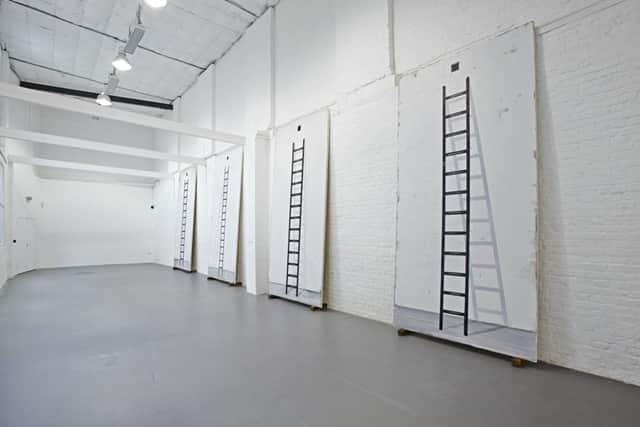

Roberts’ curator at DRAF is Vincent Honoré, previously a curator at Tate Modern and the Palais de Tokyo in Paris, (he is careful to clarify that he is “not an adviser”). He says: “With the David Roberts collection, people should understand that it’s a portrait of someone. Most of the very important private collections are a portrait of the collector. David started to collect on his own, quickly he learned a lot, and quickly he started to collect important works. Early on, he understood the direction he wanted to go with the collection.”
Advertisement
Hide AdRoberts says that getting the chance to meet artists is “probably my favourite bit of the art world”, and he counts many as friends. “I got to know Sir Anthony Caro and his wife Sheila quite well in the last years of his life. They were a great old couple, and he was exciting to be around, not only because of his own work as an artist and the work he produced over a very long period of time, but because he used to work in the studio of Henry Moore, so you hear all sorts of stories. It’s a kind of living art history, which is very exciting.”
He says his collection grew organically. “I didn’t build up the collection with a view to the foundation, I built up the collection because I just kept buying more and more and it filled the house, then it filled the office, then it filled a warehouse. I’m a very private person, I never allow tours of the house or the office because I don’t like people invading my space. Ultimately, when the collection grew, I much prefered the idea of having a separate space for people to go and look at things so they weren’t encroaching on my private life.”
Advertisement
Hide AdThe foundation started in 2007 in a smaller space in Fitrovia, moving to Camden in September 2012 after a long search for the right building. Roberts is one of several major art collectors now finding public roles for their collections rather than keeping them behind locked doors. Saatchi was one of the first to open his own gallery. Anita and Poju Zabludowicz opened their foundation space a stone’s throw away from Roberts in Chalk Farm. Others have chosen to partner with public galleries to create exhibitions, such as Anthony d’Offay, whose collection is behind the Artists Rooms project, and Dimitris Daskalopoulos, whose collection was the subject of a major show last year at the Scottish National Gallery of Modern Art.
DRAF, as well as frequently lending works to museums all over the world, hosts regular exhibitions, not only showcasing the work in the collection but offering up and coming artists the chance of a London show outside the commercial gallery system. This year opened with Geographies of Contamination, a group show of ten emerging artists, running in tandem with a show of four works by Boyle Family. There are plans for a library and a space for talks and performances, an artistic hub.
Toby Webster says: “You can be quite cynical about people setting up foundations because of the tax breaks, but David is doing it for the right reasons. He’s one of the good guys. He’s not just a collector, he’s a contributor within the art scene. I’m excited about the foundation, I think he will end up making something which will benefit the whole art community.” And which, as the golden letters on the wall suggest, has one eye fixed firmly on the future.
SEE ALSO: